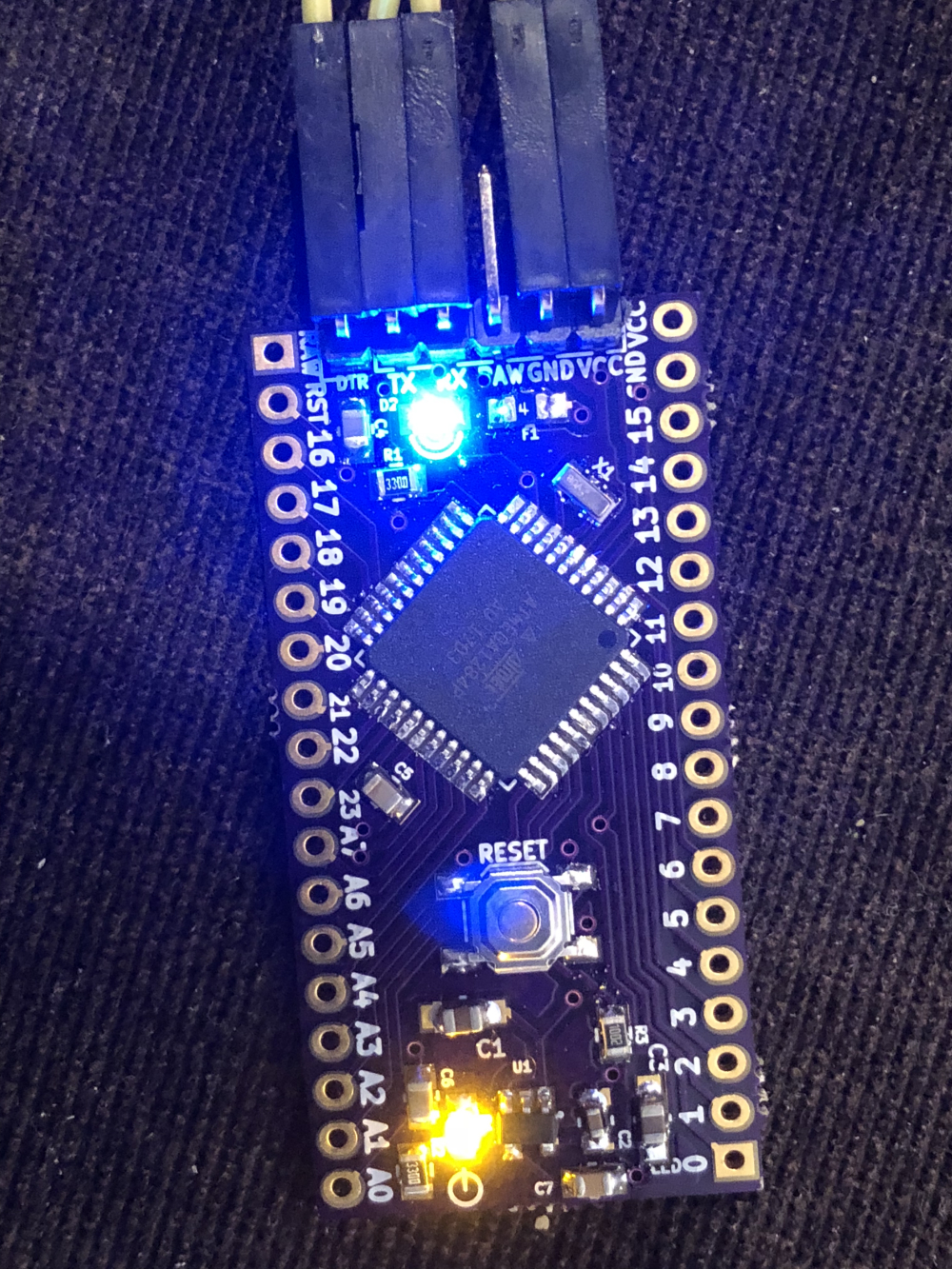atmega328p small (SMD) alternative with more memory?
-
Alternatively, this is a good size for a node - https://www.sparkfun.com/products/13664
-
@NeverDie Check out this one nRF52. Its not cheap though
https://www.tindie.com/products/onehorse/nrf52-add-on-for-butterfly-and-teensy/?pt=ac_prod_search
@alexsh1 said in atmega328p small (SMD) alternative with more memory?:
@NeverDie Check out this one nRF52. Its not cheap though
https://www.tindie.com/products/onehorse/nrf52-add-on-for-butterfly-and-teensy/?pt=ac_prod_search
Yes, I would agree that's interesting. He uses it as a BLE device, albeit purely as a UART channel, which so far isn't something that we've managed to do here with the nRF52. @GertSanders might want to take notice, as he has been doing something similar for logging purposes, but with a different bluetooth.
-
@neverdie a SenseBender mk2 based on samd would be a drop in replacement for SenseBender.
@anticimex said in atmega328p small (SMD) alternative with more memory?:
SenseBender mk2
If that's how you define drop-in replacement, I'll concede the point.
Actually, I suppose if you had a fast enough ARM, it could emulate an atmega328p (well, at least its software behavior), and thereby indirectly offer up additional memory. I actually own a board which, IIRC, does that, and it can run code even faster than the atmega328. Just don't expect low power performance out of it.
-
@anticimex said in atmega328p small (SMD) alternative with more memory?:
SenseBender mk2
If that's how you define drop-in replacement, I'll concede the point.
Actually, I suppose if you had a fast enough ARM, it could emulate an atmega328p (well, at least its software behavior), and thereby indirectly offer up additional memory. I actually own a board which, IIRC, does that, and it can run code even faster than the atmega328. Just don't expect low power performance out of it.
-
@neverdie I perhaps misread the thread title... I did not interpret the quest as something that should be binary identical to atmega328p.
@anticimex Yeah, the title was ambiguous. Looking back, your interpretation is probably closer than mine as to what he meant though.
-
@neverdie I perhaps misread the thread title... I did not interpret the quest as something that should be binary identical to atmega328p.
@anticimex you are absolutely correct. It does not have to be binary identical to atmega328p. However, size wise, it has to be small enough.
For now atmega1284p is a direct replacement for atmega328p as code is almost identical. I do not need much more processing power just memory. However, I did struggle to find a very small footprint.
-
In terms of BOM cost, it would be cheaper to add a second atmega328p (or even multiple) than to use a 1284. Maybe worth considering if memory of just one is insufficient.
-
In terms of BOM cost, it would be cheaper to add a second atmega328p (or even multiple) than to use a 1284. Maybe worth considering if memory of just one is insufficient.
-
@neverdie Did you see any small devices with two atmega328p?
Unfortunately, atmega1284p is more pricey (Moteino Mega is $15.95 on sale right now) and size wise it is much larger than atmega328p-au projects.@alexsh1 said in atmega328p small (SMD) alternative with more memory?:
Unfortunately, atmega1284p is more pricey (Moteino Mega is $15.95 on sale right now) and size wise it is much larger than atmega328p-au projects.
Yes, that's what I was trying to say.
-
On the other hand, if you go with the cheapest source, the 1284p is not too bad. Here's the cheapest I could find:
https://www.aliexpress.com/item/ATMEGA1284P-AU-ATMEGA1284P-ATMEGA1284-TQFP44/32864539405.html?spm=2114.search0104.3.1.2efd4b5asFo5Vr&ws_ab_test=searchweb0_0,searchweb201602_5_10152_10065_10151_10344_10068_10130_10324_10342_5722912_10547_10325_10343_10546_10340_10341_10548_5722612_10698_10545_10697_10696_5722812_10084_10083_10618_5722712_10307_5711215_10059_10534_308_100031_10103_441_10624_10623_10622_5711315_10621_5723012_10620_5722512,searchweb201603_1,ppcSwitch_5&algo_expid=2d7e9a21-bc2a-4ce1-bfa8-6246a79e84df-0&algo_pvid=2d7e9a21-bc2a-4ce1-bfa8-6246a79e84df&priceBeautifyAB=0 -
On the other hand, if you go with the cheapest source, the 1284p is not too bad. Here's the cheapest I could find:
https://www.aliexpress.com/item/ATMEGA1284P-AU-ATMEGA1284P-ATMEGA1284-TQFP44/32864539405.html?spm=2114.search0104.3.1.2efd4b5asFo5Vr&ws_ab_test=searchweb0_0,searchweb201602_5_10152_10065_10151_10344_10068_10130_10324_10342_5722912_10547_10325_10343_10546_10340_10341_10548_5722612_10698_10545_10697_10696_5722812_10084_10083_10618_5722712_10307_5711215_10059_10534_308_100031_10103_441_10624_10623_10622_5711315_10621_5723012_10620_5722512,searchweb201603_1,ppcSwitch_5&algo_expid=2d7e9a21-bc2a-4ce1-bfa8-6246a79e84df-0&algo_pvid=2d7e9a21-bc2a-4ce1-bfa8-6246a79e84df&priceBeautifyAB=0@neverdie said in atmega328p small (SMD) alternative with more memory?:
I paid around £3.5 (about $5) and thought it was the cheapest. WOW!
-
My new toy (atmega1284p) - Mightyduino
However, I have to think about connecting radio as this is just a bare board.
Size wise it is quite small
-
@alexsh1 Wouldn"t a teensy 3.sth fill all the requirements ? Or an ESP8266 if you don't need ADC mux. ESP32 is you do.
-
You might want to consider the STM32F103 -- they're programmable over serial in much the same way that traditional ATMEGA chips are, are arduino-compatible, can be found for roughly the same price as the 1284p, are a ton faster, and most versions have a ton more memory and flash.
You can see the full lineup of chips here: http://www.st.com/en/microcontrollers/stm32f103.html?querycriteria=productId=LN1565 -- I've personally used the STM32F103CB and STM32F103RE in a handful of projects lately.
-
@alexsh1 Wouldn"t a teensy 3.sth fill all the requirements ? Or an ESP8266 if you don't need ADC mux. ESP32 is you do.
